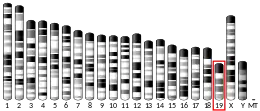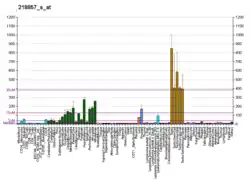| ASRGL1 | |||||||||||||||||||||||||||||||||||||||||||||||||||
|---|---|---|---|---|---|---|---|---|---|---|---|---|---|---|---|---|---|---|---|---|---|---|---|---|---|---|---|---|---|---|---|---|---|---|---|---|---|---|---|---|---|---|---|---|---|---|---|---|---|---|---|
| |||||||||||||||||||||||||||||||||||||||||||||||||||
| Identifiers | |||||||||||||||||||||||||||||||||||||||||||||||||||
| Aliases | ASRGL1, ALP, ALP1, CRASH, asparaginase like 1, asparaginase and isoaspartyl peptidase 1 | ||||||||||||||||||||||||||||||||||||||||||||||||||
| External IDs | OMIM: 609212 MGI: 1913764 HomoloGene: 11825 GeneCards: ASRGL1 | ||||||||||||||||||||||||||||||||||||||||||||||||||
| |||||||||||||||||||||||||||||||||||||||||||||||||||
| |||||||||||||||||||||||||||||||||||||||||||||||||||
| |||||||||||||||||||||||||||||||||||||||||||||||||||
| |||||||||||||||||||||||||||||||||||||||||||||||||||
| |||||||||||||||||||||||||||||||||||||||||||||||||||
| Wikidata | |||||||||||||||||||||||||||||||||||||||||||||||||||
| |||||||||||||||||||||||||||||||||||||||||||||||||||
L-asparaginase is an enzyme that in humans is encoded by the ASRGL1 gene.[5]
Function
The ASRGL1 protein consists of 308 amino acids and is activated by autocleavage at amino acid 168 to form an alpha- and a beta-chain, which can dimerize into a heterodimer.[6] The ASRGL1 enzyme has both L-asparaginase and beta-aspartyl peptidase activity and may be involved in the production of L-aspartate, which can act as an excitatory neurotransmitter in some brain regions.
According to antibody-based profiling and transcriptomics analysis, ASRGL1 protein is present in all analysed human tissues, with highest expression in brain, in female tissues such as the uterine cervix and fallopian tube, and in male tissues as testis.[7] Based on confocal microscopy ASRGL1 is mainly localized to the microtubules.[8]
Clinical significance
ASRGL1 is highly expressed in the normal endometrium and differentially expressed in endometrial cancer. Loss of ASRGL1 expression is an unfavorable prognostic feature for patients with endometrial cancer.[9][10]
References
- 1 2 3 GRCh38: Ensembl release 89: ENSG00000162174 - Ensembl, May 2017
- 1 2 3 GRCm38: Ensembl release 89: ENSMUSG00000024654 - Ensembl, May 2017
- ↑ "Human PubMed Reference:". National Center for Biotechnology Information, U.S. National Library of Medicine.
- ↑ "Mouse PubMed Reference:". National Center for Biotechnology Information, U.S. National Library of Medicine.
- ↑ "Entrez Gene: ASRGL1 asparaginase like 1".
- ↑ Li, Wenzong; Cantor, Jason R.; Yogesha, S. D.; Yang, Shirley; Chantranupong, Lynne; Liu, June Qingxia; Agnello, Giulia; Georgiou, George; Stone, Everett M. (2012-11-16). "Uncoupling Intramolecular Processing and Substrate Hydrolysis in the N-Terminal Nucleophile Hydrolase hASRGL1 by Circular Permutation". ACS Chemical Biology. 7 (11): 1840–1847. doi:10.1021/cb300232n. ISSN 1554-8929. PMC 3514461. PMID 22891768.
- ↑ "Tissue expression of ASRGL1 - Summary - The Human Protein Atlas". www.proteinatlas.org. Retrieved 2017-10-03.
- ↑ "Cell atlas - ASRGL1 - The Human Protein Atlas". www.proteinatlas.org. Retrieved 2017-10-03.
- ↑ "Expression of ASRGL1 in endometrial cancer - The Human Protein Atlas". www.proteinatlas.org. Retrieved 2017-10-03.
- ↑ Edqvist, Per-Henrik D.; Huvila, Jutta; Forsström, Björn; Talve, Lauri; Carpén, Olli; Salvesen, Helga B.; Krakstad, Camilla; Grénman, Seija; Johannesson, Henrik (2015). "Loss of ASRGL1 expression is an independent biomarker for disease-specific survival in endometrioid endometrial carcinoma". Gynecologic Oncology. 137 (3): 529–537. doi:10.1016/j.ygyno.2015.03.055. PMID 25858696.
External links
- ASRGL1 expression in the Human Protein Atlas
- Human ASRGL1 genome location and ASRGL1 gene details page in the UCSC Genome Browser.
Further reading
- Kim JM, Lee KH, Jeon YJ, Oh JH, Jeong SY, Song IS, Kim JM, Lee DS, Kim NS (2006). "Identification of genes related to Parkinson's disease using expressed sequence tags". DNA Res. 13 (6): 275–86. doi:10.1093/dnares/dsl016. PMID 17213182.
- Kimura K, Wakamatsu A, Suzuki Y, Ota T, Nishikawa T, Yamashita R, Yamamoto J, Sekine M, Tsuritani K, Wakaguri H, Ishii S, Sugiyama T, Saito K, Isono Y, Irie R, Kushida N, Yoneyama T, Otsuka R, Kanda K, Yokoi T, Kondo H, Wagatsuma M, Murakawa K, Ishida S, Ishibashi T, Takahashi-Fujii A, Tanase T, Nagai K, Kikuchi H, Nakai K, Isogai T, Sugano S (2006). "Diversification of transcriptional modulation: large-scale identification and characterization of putative alternative promoters of human genes". Genome Res. 16 (1): 55–65. doi:10.1101/gr.4039406. PMC 1356129. PMID 16344560.
- Suzuki Y, Yamashita R, Shirota M, Sakakibara Y, Chiba J, Mizushima-Sugano J, Nakai K, Sugano S (2004). "Sequence comparison of human and mouse genes reveals a homologous block structure in the promoter regions". Genome Res. 14 (9): 1711–8. doi:10.1101/gr.2435604. PMC 515316. PMID 15342556.
- Bush LA, Herr JC, Wolkowicz M, Sherman NE, Shore A, Flickinger CJ (2002). "A novel asparaginase-like protein is a sperm autoantigen in rats". Mol. Reprod. Dev. 62 (2): 233–47. doi:10.1002/mrd.10092. PMID 11984834. S2CID 32206911.
- Suzuki Y, Yoshitomo-Nakagawa K, Maruyama K, Suyama A, Sugano S (1997). "Construction and characterization of a full length-enriched and a 5'-end-enriched cDNA library". Gene. 200 (1–2): 149–56. doi:10.1016/S0378-1119(97)00411-3. PMID 9373149.
- Maruyama K, Sugano S (1994). "Oligo-capping: a simple method to replace the cap structure of eukaryotic mRNAs with oligoribonucleotides". Gene. 138 (1–2): 171–4. doi:10.1016/0378-1119(94)90802-8. PMID 8125298.




